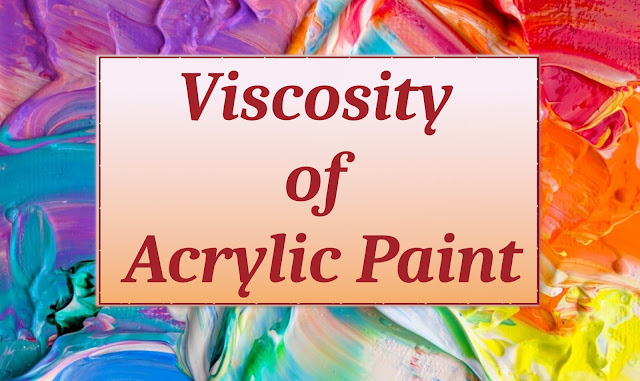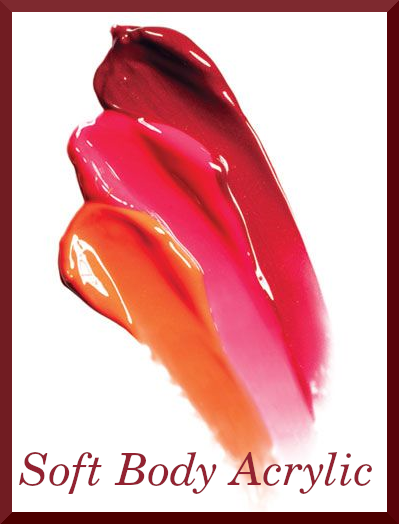Painting is an art form that involves not only selecting the right colors but also choosing the appropriate type of paint. While color schemes are crucial to the success of an artwork, the viscosity of the paint is equally important.
Viscosity is the measure of a fluid's resistance to flow, and in painting, it determines how easily the paint spreads on a surface. The paint's viscosity will decide how much pressure you must apply on the brush to retain the movement for interesting effects.
The viscosity of the paint impacts how an artist can manipulate it and achieve the desired effects. Therefore, it is essential to choose the right viscosity paint that suits the intended use. Using the wrong viscosity can impede an artist's ability to bring their imagination to life.
Paint viscosity varies from heavy body, soft body, to fluid paints, which are sold in different containers such as jars, tubes, and bottles. Heavy body paint is best suited for impasto and texture work, soft body paint is ideal for blending and continuous brushwork, and fluid paint is perfect for acrylic pouring.
Apart from Viscosity, sheen, and opacity of the paint must be considered when buying paints for any artwork. Acrylic Body Paint is broadly divided into three types:
High Viscosity Acrylic Paint is a heavy body
Medium Viscosity Acrylic Paint is a soft body
Low Viscosity Acrylic Paint is high flow ink
Each paint viscosity is designed for specific painting techniques. You can choose any one based upon the style and methods you intend to use. If you are unaware of this information, you may find it challenging to select. So read further to find out when you should use each of these acrylic paints.
Acrylic Paint Consistency:
- Heavy Body Acrylic
- Soft Body / Open Acrylic
- Fluid Acrylic
Heavy Body Acrylic Paint
Heavy body acrylic paint is a popular choice for artists who enjoy working with thick, creamy paint that can be molded and sculpted to create unique textures and visual effects. This type of paint is typically sold in jars or tubes and has a creamy consistency and a thick viscosity like butter. They can still maintain their shape but are ready to be dispersed evenly.
One of the key features of heavy body acrylics is their pure, vibrant colors. Unlike some other types of paint that may contain fillers or additives, heavy body acrylics are in their natural state, allowing the colors to shine through with full intensity.
Heavy body acrylic paints are particularly well-suited for impasto techniques, where artists build up layers of thick paint to create a sense of depth and dimension. Once dry, the acrylic polymer braces the material, adding texture and bringing a 3D aspect into the work. The paint can be sculpted and shaped on the canvas, adding a tactile quality to the finished artwork.
Because of their expressive nature and high viscosity index, they are useful in various applications. Mediums can be used to thin or thick the paint without affecting their glaze and shine.
Heavy body acrylics are excellent for artists who like oil paint but cannot wait for the drying period. When painting using acrylics, multiple layers of varying thickness are implemented in sequence. Next coating is applied when the prior will be a bit dry, unlike with oil painting.
In summary, heavy body acrylic paint is a versatile and expressive medium that can be used to create a wide range of effects in artwork. With its creamy consistency and vibrant colors, it is an excellent choice for artists who enjoy working with thick, sculptural paint.
Ideally used for:
- Palette knife painting
- Creating a nearly 3D effect
- Impasto layers, in which the brushstrokes are apparent
- Create layers of rich color and feel
Soft Body Acrylic Paint
Soft body or fluid acrylic paints are two other popular viscosity options for artists working with acrylics. Unlike heavy body acrylics, they have a more fluid consistency that flows smoothly and evenly like a thick cream.
Despite their thinner consistency, soft body and fluid acrylics have a similar intensity and pigment load to heavy body paints. This means they offer the same glaze, shine, and color purity, making them a versatile choice for many different types of artwork.
Soft body acrylics are particularly well-suited for techniques like dry brush, detailing, pouring, and primary artwork. They are also flexible and can be mixed easily with other types of acrylic paints, including heavy body and fluid varieties.
One advantage of soft body and fluid acrylics is their ability to blend seamlessly on the canvas or make changes to an existing artwork. This flexibility allows artists to experiment with different colors and effects, making it a popular choice for both beginners and experienced artists.
In summary, soft body and fluid acrylic paints offer a versatile and flexible medium for artists looking to experiment with different techniques and styles. Their smooth, even consistency and intense colors make them a great choice for a wide range of applications, from detailing to pouring, and beyond.
Ideally used for:
- Fine detailing work
- Glazing
- Staining
- Dry brush or spraying
High Flow / Acrylic Ink
High flow acrylic paints have a unique ink-like consistency and the lowest viscosity index among all the acrylic paints. They are water-based, highly pigmented, and extremely fluid. When applied to a surface, they form a water-resistant film.
One of the most popular techniques used with high flow acrylics is called glazing. This involves adding transparent medium or water to the paint in a ratio of around 2:8 (paint to medium). The mixture is then applied in multiple transparent layers to create a unique glazing effect. This technique is particularly effective on smooth canvases or watercolor paper.
High flow acrylics are also versatile in terms of the different application methods that can be used, including brushes, markers, dip pens, and airbrushes. Because of their free-flowing nature, brush marks are not visible on the final artwork, allowing for greater precision and detail in different techniques such as staining, leveling, calligraphy, mixed media, fine line work, and broad strokes.
In summary, their unique consistency and versatility make them ideal for glazing, as well as a wide range of other applications, from fine line work to broad strokes. With their vibrant colors and water-resistant film, high flow acrylics offer artists a powerful tool for bringing their creative visions to life.
Ideally used for:
- Watercolor effects
- Stamping
- Airbrush, dip pen, calligraphy
General Tip
You can mix different types of acrylic body type paint together to achieve the desired consistency. There are many gels and mediums in the market that can be used to get the correct viscosity. A beginner can start with soft body acrylic, as they are easy to control.
Artists also use multiple types of viscosity in a single painting. You need to make a logical choice for your work. It will help you make the most of the acrylic paint.
We hope this article has provided you with valuable insights into the different viscosity of acrylic paints.



